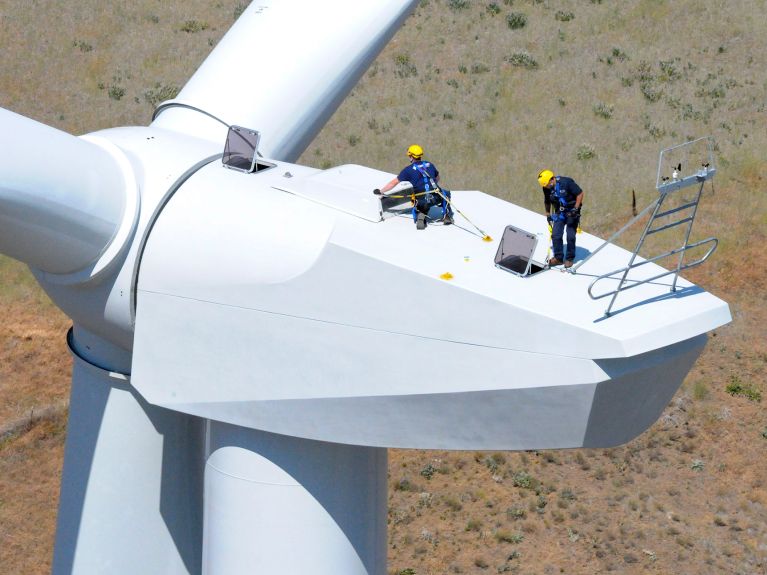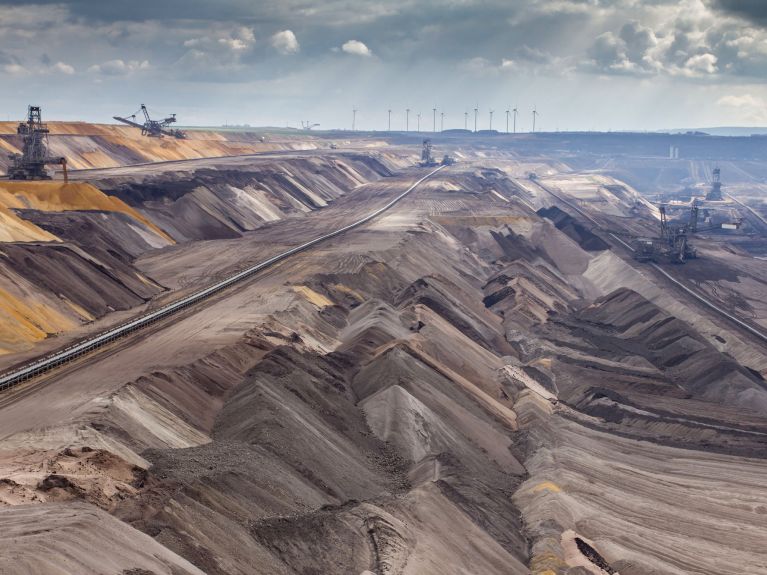Eight facts plus one challenge related to climate action
Germany is determined and able to achieve the climate targets but faces a considerable challenge.

1. Lower greenhouse gas emissions in Germany
Greenhouse gas emissions in Germany have already been cut significantly since 1990. By 2022, they had been slashed by around 506 million tonnes, or 40.4 percent.
2. Which sector generates the most greenhouse gas emissions
Emissions in 2022 totalled just shy of 746 million tonnes. The largest share of carbon emissions was generated by the energy sector at 246.6 million tonnes, followed by transport (147.3) and households and small consumers (115.5)

3. Expanding renewable energies in Germany
The proportion of renewable energies is growing all the time. It accounted for 52 percent of gross electricity consumption in June 2023. This figure is to be increased to at least 80 percent by 2030.
4. German forests as carbon sinks
Forests absorb huge quantities of carbon dioxide from the atmosphere, making them one of the world’s largest carbon sinks besides oceans - in Germany they are in fact the largest carbon sink. This is because 31 percent of Germany is covered by forest. Germany’s forests remove around 52 million tonnes of carbon dioxide from the atmosphere every year.
5. Climate neutrality by 2045
Germany wants to become one of the world’s first climate-neutral countries by 2045. To this end, the German government is pinning its hopes on green hydrogen in particular.
6. National Hydrogen Strategy
The German government adopted its National Hydrogen Strategy in 2020. The government doubled its targets in 2023. By 2030, the aim is to increase Germany’s capacity to produce green hydrogen to at least ten gigawatts. Since Germany is unable to meet its demand on its own, it is relying on international cooperation to achieve its targets.

7. Carbon phase-out agreed
By 2038 at the latest, Germany’s last coal-fired power station is to be decommissioned. Ideally, coal is already to be phased out by 2030.
8. Phase-out of nuclear power
Following the reactor disaster in Fukushima in 2011, Germany began preparing to phase out nuclear power by the end of 2022. The last three German nuclear power plants were shut down on 15 April 2023.

9. Germany’s challenge
By 2030, the German government wants to establish ten gigawatts of electrolysis capacity to produce green hydrogen in Germany. This would cover roughly 30 to 50 percent of German demand. For this to be possible, Germany will need to import large quantities of hydrogen. The Ukraine war has made it clear that depending too heavily on energy suppliers can pose a problem in the event of a crisis. That’s why Germany is signing cooperation agreements with many different partner countries to ensure that tomorrow’s energy supply is as eco-friendly and crisis-resistant as possible.


